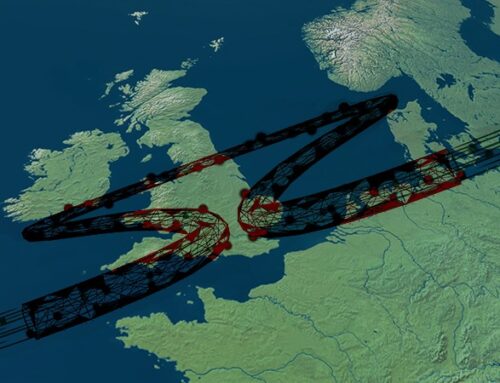With the start of October, the new retail price cap for British households comes into force. The cap level for Q4 24 is £1,717, £149 more than for Q3 2024, for an average dual fuel household paying through standard credit. It is likely that the second half of the winter, Q1 25, will be higher if prices follow normal seasonal trends. These increases combined with the removal of the Winter Fuel Allowance from large numbers of pensioners makes energy affordability a hot topic again.
Although the cap level is higher than it was in the summer, this is to be expected in the heating season, and prices are lower than they have been since Winter 2021. Ofgem has also extended the bad debt allowance which was introduced after Ofgem required suppliers to do more to prevent consumers being forced onto prepayment meters and potential disconnection or self-disconnection as a result of financial hardship. Since gas and electricity are not free, and suppliers should not be expected to give them away, Ofgem determined that suppliers could cover the potential losses resulting from these restrictions through a bad debt allowance added to the price cap. This has now extended this to the end of this year. Through this mechanism, consumers who are not in default directly subsidise those who are.

Going forward, normally Q1 would price higher than Q4 based on seasonal patterns, however, in the past week, Cornwall Insight has forecast a slight reduction on the basis of a well supplied European gas market. However, as I described in a recent post, there are conflicting price drivers. After two mild winters, colder weather might be expected this year, with the attendant higher gas consumption, which would tighten the market and increase prices. On the other hand, hedge fund activity has potentially pushed prices higher than might be justified by the fundamentals, but a correction may not be seen before the spring. I would not, at this stage, bet on prices falling into Q1.
Limitations of the price cap
As I have described previously, the price cap is a blunt and limited tool. The cap had its origins in a flawed analysis by the Competition and Markets Authority which found that energy consumers were experiencing an average detriment of £1.4 billion per year as a result of anti-competitive behaviours by suppliers. The resulting public outrage led to a knee-jerk political response and the introduction of the retail price cap.
“The CMA calculation was quite simply a mistake. The CMA compared actual costs against “a hypothetical construct” that was essentially “an idealised perfectly competitive market” with unrealistic costs. This was inconsistent with conventional economic analysis, with previous competition authority practice, and with the CMA’s own guidelines. So there is not, and never was, a detriment of £1.4bn to £2bn a year. Consequently, the tariff cap is simply a mistake. Rather than looking to extend it, the Government should be looking to remove it,”
– Stephen Littlechild
From the outset, the cap has been misunderstood by the public. Ofgem’s role is to set the cap at a “fair” level at which a reasonably efficient supplier could earn a reasonable return. However, the public expects Ofgem to ensure that the cap is “cheap” and is angry when the level is increased. It is also angry when Ofgem allows recovery of costs which are difficult to explain and appear to boost supplier profits, but are in fact legitimate. The best example was when Ofgem allowed the recovery of income lost in previous cap periods as a result of rapid wholesale price increases within the cap period – this was effectively deferred income (not in a tax sense), which, having created a loss in the earlier period, generated a later profit neutralising the position ie as if the cap had been adjusted at the time to reflect rising wholesale prices.

The challenges of the price cap have been described in detail within this blog previously, but briefly:
- Supplier financial distress: price caps can create financial distress for suppliers if not implemented correctly. This was seen in California in the early 2000s (as described in this blog), and repeated in GB in 2021-22 when half of the suppliers in the British market failed when the cap failed to keep pace with rapidly rising wholesale prices. As in California, state intervention was required to stabilise the market. This was easily foreseeable.
- Deters new entrants and investment: price caps stifle competition and investment as new entrants /market participants shy away from the market out of concerns they may be unable to earn an acceptable return.
- Deters switching: price caps stifle competition as consumers are less likely to switch since they believe the regulator is setting a fair price and therefore there is little to be gained from switching. In addition, hostile language relating to suppliers from both Government and Ofgem may lead consumers to stay with the “devil they know” rather than risk switching to a supplier that may be worse.
- Limits tariff variation: in capped markets, suppliers tend to set tariffs close to the cap level.
Looking at the historic tariff comparisons above is interesting since it demonstrates that the price cap in practice made little difference to the long-term trend in tariffs in both the overall level and the spread between types of suppliers. Clearly in 2021-22 high wholesale market prices drove fixed price deals which were significantly higher than the cap level and the market for fixed price deals was closed until recently. It is now possible to access fixed price tariffs of up to about £150 /year below the current tariff level, although these are likely to be higher than the prices we may see next summer (due to effects of seasonality).
However, energy prices are still unaffordable for many, as evidenced by the extension of the bad debt allowance. The removal of the Winter Fuel Allowance for many pensioners will add to the hardship felt by many. There continue to be calls for the price cap to be replaced with a social tariff(s) ideally funded through taxation rather than through bills. Wealth re-distribution should be carried out through the tax and benefits processes managed by the Government and not through energy bills set by the energy regulator.
Thoughts on dynamic pricing
The subject of time-of-use tariffs is close to the hearts of many in the market. Under these models, prices would increase at times of higher demand and reduce in times of lower demand, with the objective of reducing peak demand, thereby utilising generation and network assets more efficiently. With that in mind, the recent furore about rock band Oasis’s dynamic ticket pricing is interesting. Dynamic or “surge” pricing is common in airline ticket prices and hotel room rates during holiday seasons, and Uber recently introduced surge pricing during peak traffic hours.
However, the extent of the price increases for the Oasis tickets was such that there was a wide public outcry with both the European Commission and UK Government committing to investigating the practice. These investigations are limited to the market for concert tickets but the extent of the outcry and swift reaction from policymakers is interesting. Should energy prices be exposed to such increases in peak hours, similar outrage could be expected.
Demand-side flexibility is seen as key to managing a de-centralised and de-carbonised electricity system, but this strong reaction to the exact same pricing techniques in relation to something as relatively trivial as a concert ticket, indicates that delivering meaningful time-of-use pricing in the energy sector may be easier said than done.






Thank you, Kathryn, for this useful analysis.
I agree that introducing dynamic pricing will be very difficult politically to introduce. From an engineering point of view it would amount to introducing a control system without feedback.
Demand side flexibilty is one of the solutions in the prevailing narrative. The level of flexibility required is not studied in any depth. Looking at a winter daytime with max wind and solar (ie both windy and sunny) customers would be required to double their usage. For a winter daytime customers with min wind and solar customers would need to reduce their usage to half of their summer night usage. It is difficult to imagine what price incentives would enable these huge weather dependent changes in human activity.
The narrative counters with storage but these requirements are not analyed either.
Natural Gas UK GBP sitting at just shy of 100p/therm this morning aint going to help Q1 if sustained.
I agree with Prof. Stephen Littlechild that the cap is a flawed basis and should be abolished. Clearly we need to provide some proper assistance to those who are particularly badly affected by bad energy policy imposed by government and quangos (with only a slight acceleration of badness under the new government). But the only real way to get bills down and make them competitive is to address the costly supply system we are building, halt it in its tracks and replace with a resilient low cost system (low cost nuclear, some HELE coal to spread commodity price risk and gas, preferably from domestic sources as much as possible), that avoids the need to carpet the country in pylons, wind and solar farms and substations full of miscellaneous gubbins to try to hold it all together. Trying to lay the blame on retailers for bad government policy is getting old.
ToUTs are only of benefit to the few who choose to let the state run their lives, and who go back to being more influenced by the weather than even their great-great-grandparents. We never really needed them in the past. The only truly draconian one we attempted was the Triad system, which simply shifted the responsibility for providing peaker generation to private generation by large industry, or resulted in industrial closure. Again, back to basics would help.